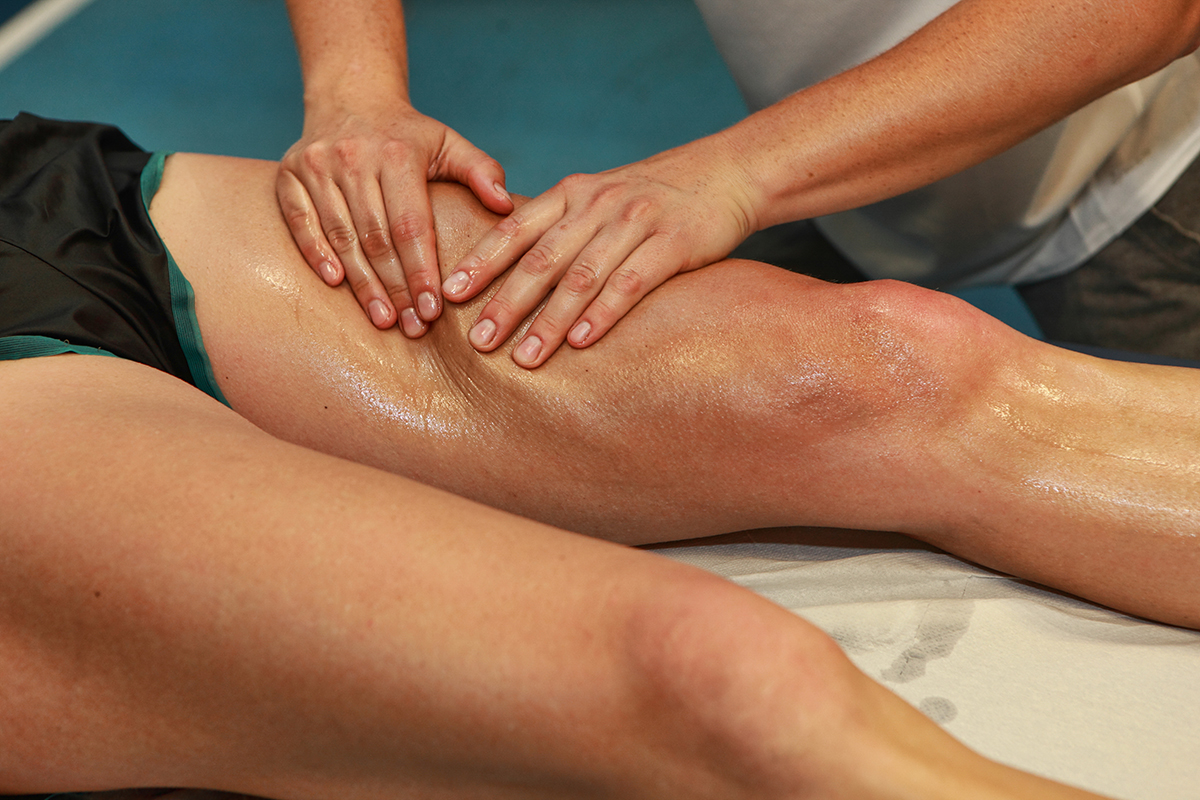Whether you’re a professional runner or just like to hit the pavement as part of your daily exercise, massage therapy provides several benefits for runners. Since the legs, feet and ankles absorb a lot of shock when running, they can end up feeling tight, sore or fatigued post-run. In this article, learn about the different types of massage, how they can treat common injuries caused by running, and when they should be utilised.
Why runners should have a massage
Massage has been a part of training programs for professional runners for a long time. This is because massage helps aid recovery and can be useful for protecting against injury, as massage relaxes tense muscles and reduces minor scar tissue between the muscles and the fascia.
Muscle tension and scar tissue can restrict movement and impair your range of motion, which can lead to abnormal running patterns that may cause injury. In addition, a lot of running injuries are caused by the overuse of a particular muscle, resulting in sore, painful and inflamed muscles. Massage helps to reduce this initial inflammation and restore muscle balance. Massage – especially deep tissue massage – also improves blood circulation which can help to flush out the by-products of impactive exercise.
Massage can also assist runners by reducing existing muscle soreness, treating pre-existing injuries, and relaxing the nervous system. In fact, relaxation is one of the most important benefits of massage a runner can get. Stressors from life outside of running can negatively affect a runner’s mindset and focus pre-race or run. It can hinder the body’s ability to adapt because it’s already overloaded, leading to faster fatigue. Just as it can ease pain and help the mind and body to relax, massage can assist in the body’s faster recovery making it more ready for the next run.
Different types of massage for runners
There are many different types of massage, making it difficult to know which one is right for you as a runner. While sports massage is what most comes to mind when an athlete is seeking treatment, there are plenty of other types of massage that can benefit just the same.
Sports Massage
Sports massages are used by runners throughout various stages of their training cycle, including both before competitions and after competitions. A pre-competition sports massage will help to relax runners and maintain the elasticity of muscles and tissues. On the other hand, a post-competition sports massage will assist runners with their recovery process and prevent injuries by removing scar tissue and waste products like lactic acid. This is because a sports massage works to reduce stress and tension in the body caused through running.
Deep tissue massage
Deep tissue massage is one of the most common types of massage used to treat runners, targeting both the superficial and deep layers of the muscles. A massage therapist will use deliberate, focused strokes to reach the deeper layers of muscle and quickly relieve tight spots. Deep tissue massage is often used during hard training sessions, as well as following a race, and can be used to treat leg and foot injuries.
Active release technique
Active release technique (ART) is a massage technique that helps to relieve muscle adhesions and reduce scar tissue buildup. During the massage, the therapist will combine movement with deep pressure to break up adhesions with their hands. ART is best for runners who require treatment for a specific injury, especially one where scar tissue impacts the ability for the body to heal itself. Common problems runners have treated with ART is pulled hamstrings, plantar fasciitis and shin splints.
Trigger point massage
Trigger point therapy targets muscle knots and referred pain in the muscle tissue. The therapist will locate these knots and painful areas and use deep pressure to loosen the muscles. Like ART, trigger point therapy is best used to treat injuries. In fact, trigger point massage has been proven to be effective in treating IT band tightness, calf strains and hamstring injuries.
How often should runners get a massage?
How often you get a massage is completely up to you or what your therapist suggests, but it’s recommended not to get a massage the day before a race or directly after a marathon. This is because a massage may leave you feeling sore, especially if you get a deep tissue massage. It’s best to wait 1-2 days after a race to get a massage, and if you wish to get a massage before a race you should schedule it for 2-3 days before.
As deep tissue massage releases waste products at a cellular level, framing your massage around your workouts helps to speed up recovery time and leave you feeling fresh when you’re at the start line. You may want to schedule a massage after an easy run or training session so your muscles are relatively relaxed and not fatigued.
Are sore muscles affecting your running performance?
A massage is hugely beneficial for runners as it keeps the body and muscles feeling fresh and working effectively. Massage can help correct muscle imbalances, treat and prevent injury, relieve tightness and provide overall relaxation, keeping the runner in the best condition for racing.
If you’re a runner in need of any of the massage treatments listed in this article, always choose a massage therapist that has qualifications, like those who have completed a course with Discover Massage Australia.

